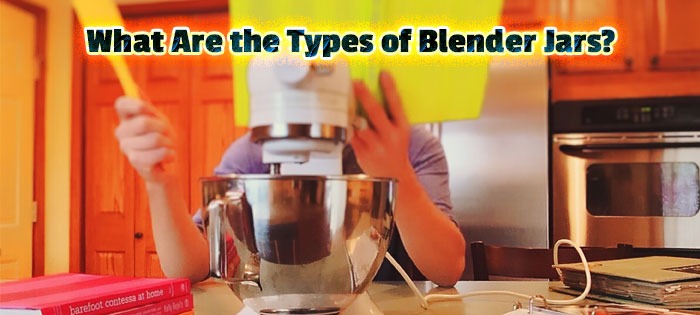When shopping for blenders, one thing that people would usually overlook is the material of the blender jar. It’s probably because it doesn’t do the blending itself – it’s just a container, right?
But while the pitcher itself doesn’t have a direct impact on the machine’s blending power, it is still an important part of the blender simply because it’s where you throw all your ingredients and where the blending action occurs. The material of the different blender jars might even have a direct effect on the ingredients that you’re blending.
People who are looking for nothing but the best blenders around will definitely consider the type of the jar. They want a blender jar that’s durable and made from good quality materials, no less.
Here are the common types of blender jars, along with their advantages and disadvantages:

Probably the biggest advantages of a plastic blender jar are its relative lightness and durability. Even if you knock over it and it falls on the floor, it will still come out in one piece. No fragments, no shards, not even a dent. Plus, plastic blender jars are mostly inexpensive.
A lot of users also like the plastic blender pitchers’ easier-to-read measurement markings (whether they are printed or embossed), possibly because a plastic jar is a lot less reflective than its glass counterpart. And of course, you will be able to see the contents inside the jar while the blender does its chopping, grinding, mixing and blending magic.
While there are the “positives” of using a plastic blender, there are also the “negatives.” First of all, plastic blender jars tend to show scratches or any other markings as a result of the blending action. Second, they are more prone to retain food odors and discoloration, so it would take some assiduous cleaning and washing in order to get rid of the smell and the stubborn stains. Third, there is a possibility that some plastic blender jars may contain BPA – a chemical found in many plastic products – which can be detrimental to your health. BPA is linked to a number of grave diseases (including cancer) especially when one is exposed too much to it. So if you ever decide to buy a blender with a plastic jar, make sure that it is BPA-free.
Low-end and cheap plastic blenders may break especially if you attempt to crush ice or introduce frozen ingredients (like frozen fruits for making smoothies) in it.

Unlike the plastic jar, a glass jar is highly resistant to scratching. It can hold itself well especially when crushing ice, chopping fibrous produce or blending frozen ingredients. Plus, it doesn’t retain the odors and the colors of the ingredients that have been put inside it – so washing it is practically a breeze.
However, a glass jar blender is prone to breakage, so you must be careful not to tip it, or to slip it especially when you’re carrying or hand-washing it. While a lot of people won’t mind the relative heaviness of the jar, others may find the weight it a bit troubling. Plus, it tends to be more expensive than its plastic counterpart.

Since metal is a good conductor of temperature, these jars tend to be better when it comes to retaining the heat or coldness of the ingredients being blended. That’s why some professional baristas prefer making cocktails, margaritas and other chilled/frozen drinks using this type of jar.
For one, a stainless steel metal blender jar is durable all the way through – it won’t break even when it’s knocked over, and it remains stable when in use. Another, it does not scratch nor retain odors or colors.
But there are also disadvantages of a stainless steel jar blender. First of all, it is the most expensive among the other blender jar materials. Second, it may dent especially when it falls hard on the floor or when it’s not handled properly. Third, it is not transparent, so you won’t be able to see what’s blending inside. Since a stainless steel blender jar is not transparent, it does not have the markings that would otherwise help you to properly measure your ingredients.
Buying a good blender can be seen an investment, so you should consider all the factors involved including the jar material. Would you settle for a cheap but easily breakable blender, or would you cough up a lot of cash to buy a high-end one?
Relying on your shopping intuition may help a lot, but it won’t hurt if you also read reliable blender reviews (especially the ones written by the end consumers themselves) that will help you in choosing the best product that you can afford.

